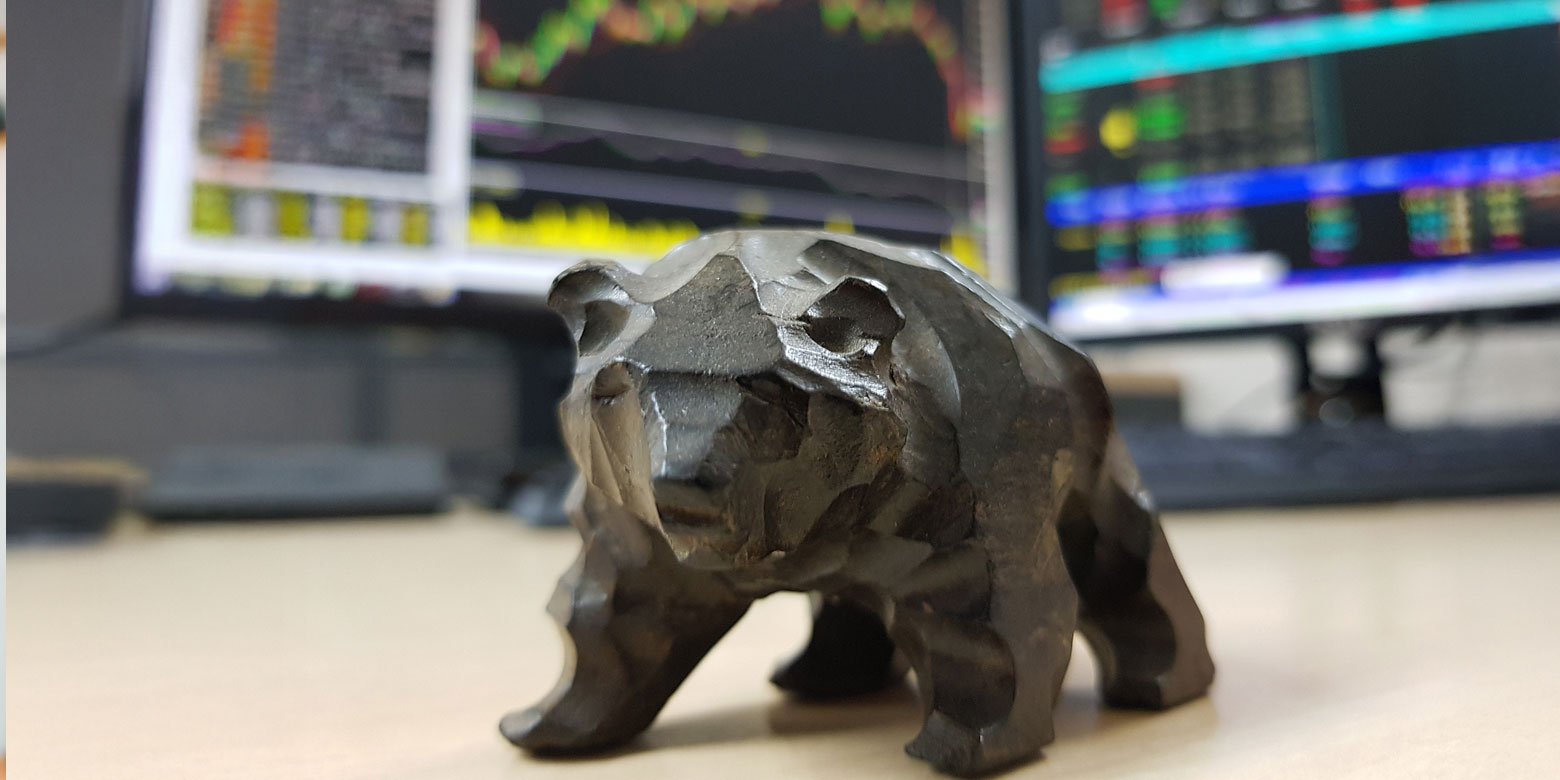In a perfect world, every investment you make would yield favorable returns — but we all know that sort of guarantee goes against the very nature of investing. Yet, as investors (and humans), we often can’t help but feel tempted to shoot our shot with something we know is risky but that might turbo-charge our portfolio.
Taking risks isn’t always a bad idea, especially some calculated risks. Some investors have a higher risk tolerance than others, and the goal of most portfolios is to achieve balance between aggressive and conservative investments. It all depends on your financial situation and what you can realistically handle. But, when your investment choices are impulsive, that’s when you might find yourself in trouble.
What’s the appeal of putting your money toward an investment with a low probability of return? Well, a few common biases often influence us to take the leap. Let’s take a look at why investors are drawn to more speculative investments, and, depending on your situation, what you may want to consider doing instead.
Following the crowd
Blending into a crowd often makes people more comfortable, which is why phenomena like “herd mentality” or “herd instinct” exist. When we see others doing something, we can be inclined to fit in and follow suit.1 In many areas of your life, following the crowd may serve you just fine. But when it comes to your portfolio, it could potentially lead you down a deceptive path.
Herd instinct can cause groups of investors to buy or sell all at once, which is an event commonly referred to as “panic buying” or “panic selling.” As a result, the market fluctuates abruptly and often drastically. When massive groups of investors suddenly pull their money out of the markets or shift direction on a dime, they’re making impulsive, short-sighted decisions based on emotions like fear or greed. Once we see others doing it, we’re inclined to want to follow suit so we don’t miss out.1 (FOMO is real!)
Surely, not everyone can be wrong, can they? Well, unfortunately, it’s a possibility. Even if others are making appropriate choices for themselves, that doesn’t mean those choices are appropriate for you. Your portfolio looks different from your neighbor’s portfolio, your coworker’s portfolio, your parents’ portfolio, and so on. What may be an acceptable opportunity for someone with a long timeline and ample resources might be much too risky for someone with a short timeline, greater needs, and less margin for error.
What to do instead
Anytime you see massive, sudden movements in the market, pause and look at the situation from a wider perspective before you follow the crowd. While short-term movements can trigger anxiety about missing out on gains, we believe it’s the longer-term perspective we need. The market has historically trended upward over time, despite drastic, short-term drops. Through wars, housing crises, pandemics, technology revolutions, political upheaval, and everything in between, the markets have, thus far, always recovered over time.2
In fact, the market is meant to be cyclical — meaning movements (whether upward or downward) are completely normal and to be expected. What you see happening today is just one teeny fraction of the market’s movements over your lifetime. Choosing to make impulsive decisions based on one small snapshot in time can greatly impact your long-term growth potential, many times for the worse. Instead, we suggest you try to ignore the day-to-day market movements that are driven by short-lived events, and keep your eyes on the horizon.
Falling for misinformation
A big reason why some investors may feel comfortable pursuing low-probability opportunities is because they’re relying on misinformation — meaning information that may be misleading, missing context, or just flat-out wrong. As a result, they don’t always understand the risks involved with an investment or are otherwise convinced the risks are worth ignoring. The recent surge of finfluencers (financial influencers) sharing “advice” online is just one example of how misinformation can spread far and wide — and fast.
Another one of the most widespread concerns with misinformation in the markets is the popularity of penny stocks, or, more specifically, penny stock scams, often called “pump and dumps.” Bad actors overhype a stock, often with false information, and after they’ve lured in investors hoping to realize gains, the bad actors sell their shares at the top, leaving investors with nothing.
What to do instead
Before investing in anything, double-check your sources of information. Are they reliable, like information filed with the SEC, audited financial statements, or suggestions by financial professionals who have no vested interest in you completing that investment? Or, are they internet strangers relying on force of personality who might be interested only in increasing the value of their own investments?
While you’ll want to rely on the facts (and more specifically, facts from credible sources like government websites or a fee-only financial advisor), it’s okay to listen to your own instincts as well. If something sounds too good to be true, you’re going to feel that twinge of doubt in the back of your head — don’t hesitate to listen to it. Never invest in an opportunity because you feel pressured, especially if your alarm bells are ringing. When in doubt, ask a trusted financial professional to review the investment and its associated risks.
Past successes create a sense of overconfidence
Confidence as an investor is a great attribute to have. Overconfidence, however, can land you in hot water.1
If you’ve ever been on a “winning streak,” you’ve probably experienced what it’s like to feel unstoppable. As a result, you may be more inclined to make riskier decisions than you normally would. It’s tough to leave the Blackjack table at a casino when you’re on a roll, right? There’s a reason for that.
In investing terms, that overconfidence can often be attributed to something called a “recency bias.” We tend to believe that whatever happened most recently will continue to happen. If we’ve succeeded in the recent past, we assume that we’ll continue to succeed in the future, despite the risks or realities of the situation.
Even if you haven’t personally experienced a certain success, seeing others succeed may make you more inclined to participate as well, even if the actual odds of achieving positive returns are poor.
What to do instead
One of the most fundamental principles of investing is that past performance does not guarantee future results. It’s a common disclaimer on any investing-related website, yet it’s something investors may easily overlook.
Rather than rely on the past success of a certain investment or asset type, focus on information that can help you understand the opportunity in front of you. This should include fundamental reasons this investment or asset type might be positioned to increase, the risks associated with the investment, and whether that investment is a good fit for your portfolio (based on your current holdings and overall tolerance for risk).
The goal here is to replace assumptions based on previous successes with critical evaluation — ultimately leading you to make data-driven decisions with a forward focus.
Opting for exciting opportunities over "boring" ones
Even if the odds of failure are high, an opportunity may just be exciting enough (or hyped up enough by others) that investors are willing to take their chances. Often, they’re chasing the highs of winning a gamble — sometimes without taking into account the potential for a major loss.
One of the most prominent recent examples of this was the sudden and surprising GameStop stock trading event of January 2021. When retail investors collectively bought a significant amount of GameStop shares, the price skyrocketed from around $3 a share in December 2020 up to $120 a share on January 28.3 You might recall reading about the “GameStop Millionaires,” referring to the amateur investors who made it big with their investments in what was soon dubbed a “meme stock.”
As exciting as it is to read about overnight millionaires, keep in mind that if it’s newsworthy, it’s not common. People don’t make headlines for sticking to their long-term investment strategy, even if it helps them achieve their goals and become financially independent. It’s those sensationalized outliers and “success stories” who make it on the news — often leading others to think that’s their only road to success as well.
What to do instead
In the world of investing, calling a high-risk stock “exciting” is a good indicator that its hype is short-lived and likely based on circumstances that will soon change.
When investing for the long term, avoid focusing on the quick dips and dives that make headlines. Rather, we strive to build a diversified portfolio that’s intended to grow steadily over the long run, despite the day-to-day fluctuations.
Your portfolio should be a reflection of your unique needs and greater goals, whether that’s retiring in style, buying a vacation home, paying for a grandchild’s college tuition, or doing whatever else your heart desires. Following market trends may be exciting, but it may also not be the right path.
Pursue opportunities that make sense for you
Instead of jumping on low-probability opportunities impulsively, however high the rewards might be, focus on opportunities that match your risk tolerance and that support a stable financial freedom.
There’s never been a perfect “one-size-fits-all” approach to investing, and that’s because every investor is unique. While hot stocks and high risks may sound exciting, they don’t always mesh well with your long-term investment strategy, goals, or comfort with risk. Always do your own research when considering a new opportunity, and don’t be afraid to go against the grain.

Like what you're reading?
Join the thousands of readers getting stories like this delivered straight to their inbox every Thursday — for free. Give it a spin, enter your email to sign up.
Footnotes
[1] Behavioral Patterns and Pitfalls of U.S. Investors, Library of Congress and the Securities and Exchange Commission, August 2010.
[2] S&P 500 Index - 90 Year Historical Chart, February 14, 2024.
[3] GameStop Corp. (GME), February 14, 2024
Related Articles

Timing the Market Can Often Mean Missing the Best Days
Watching your portfolio decline is never fun. And when it happens day after day… the pain is...

The 4 Stages of the Stock Market Cycle – And What Drives Them
People tend to view stock market trends linearly, meaning they look at a line that moves up and...

How to Take Advantage of a Market Downturn
For long-term investors following a disciplined investment strategy, a market downturn usually is...
